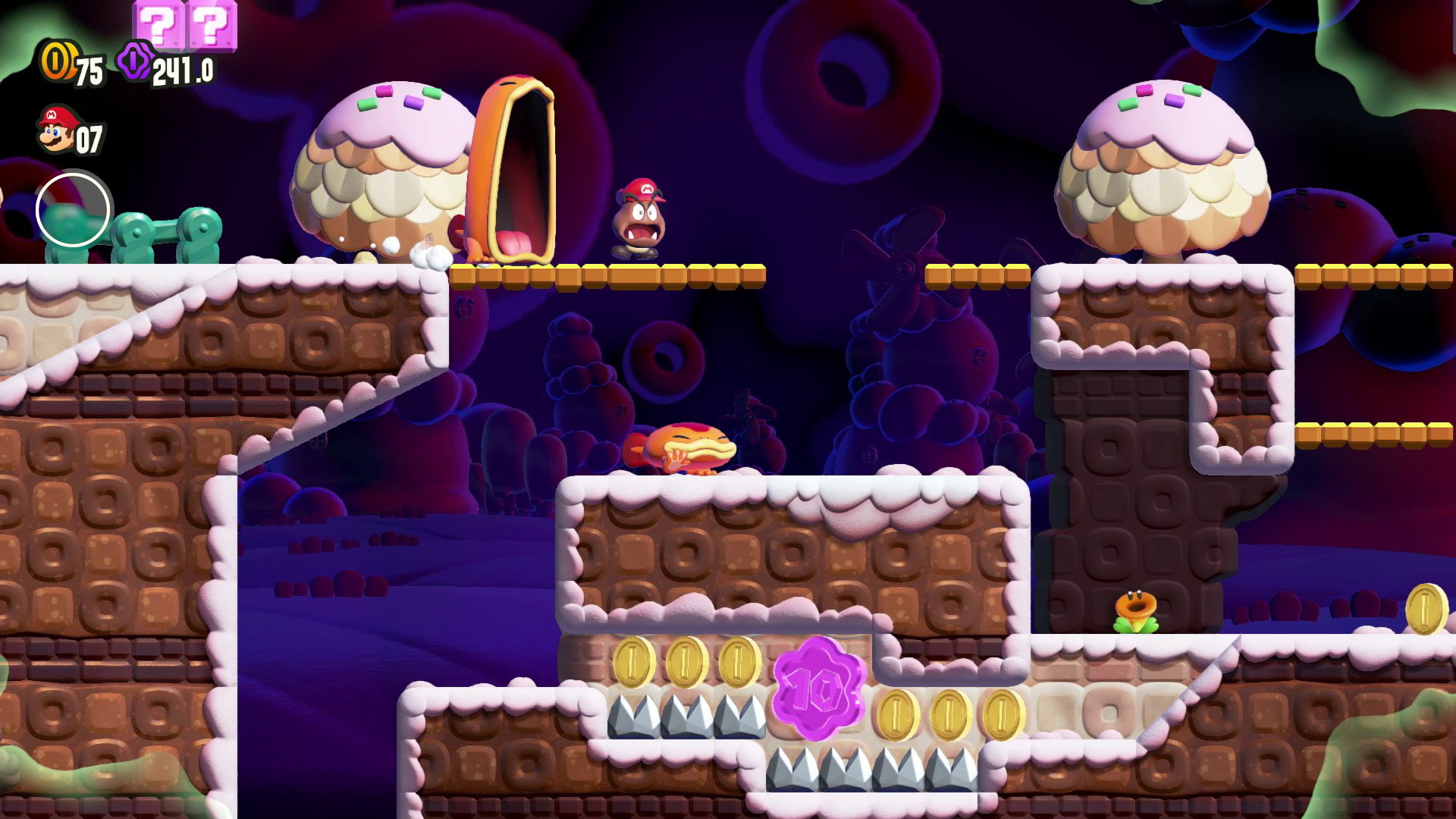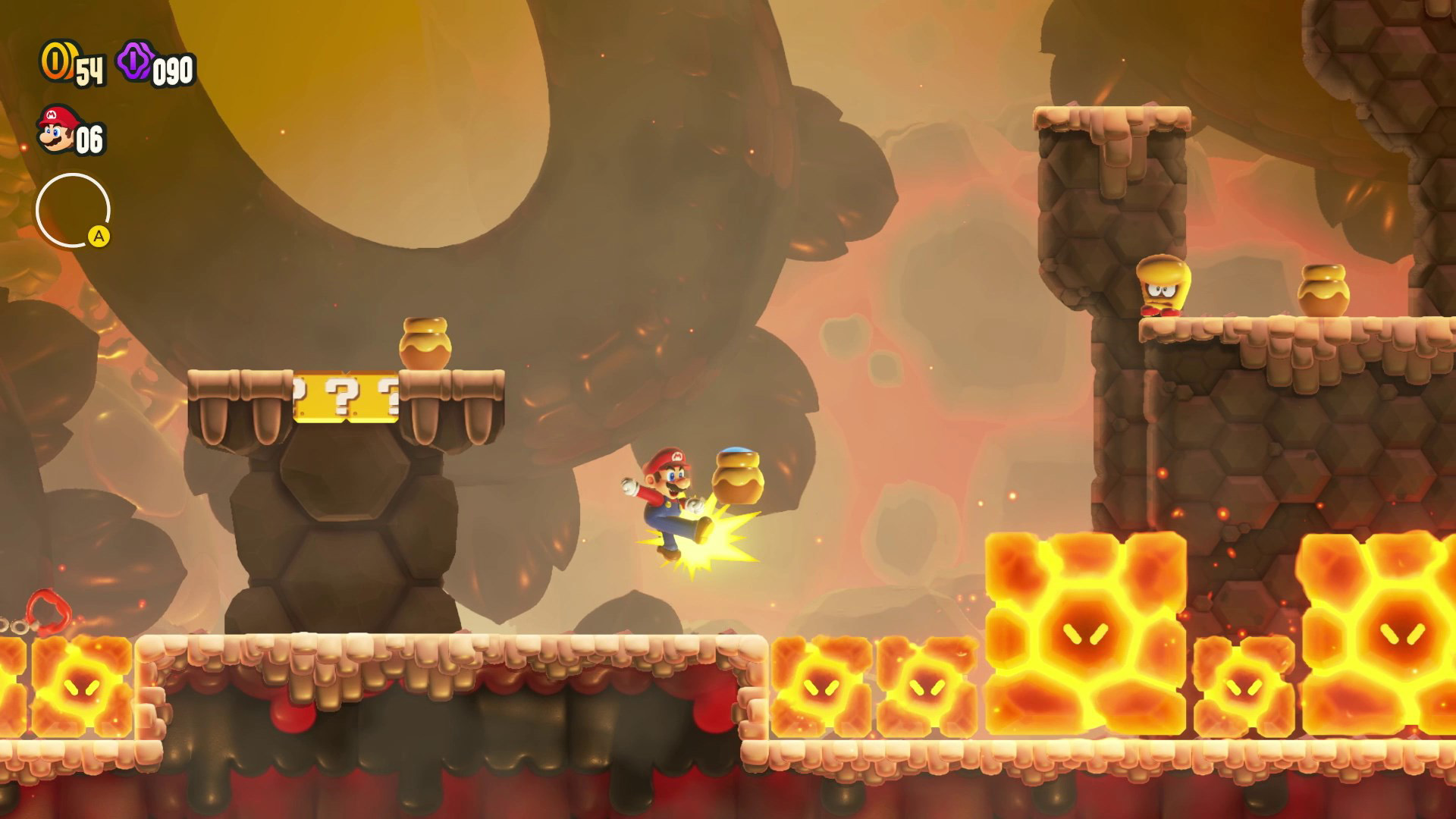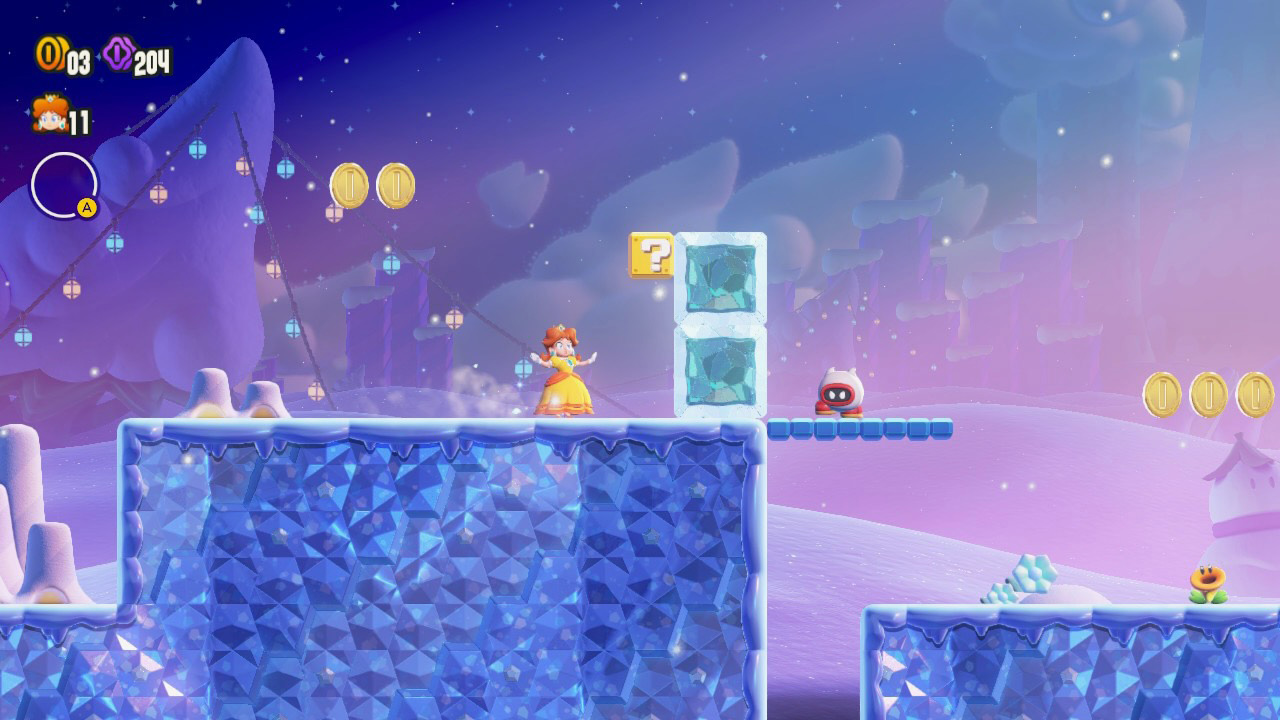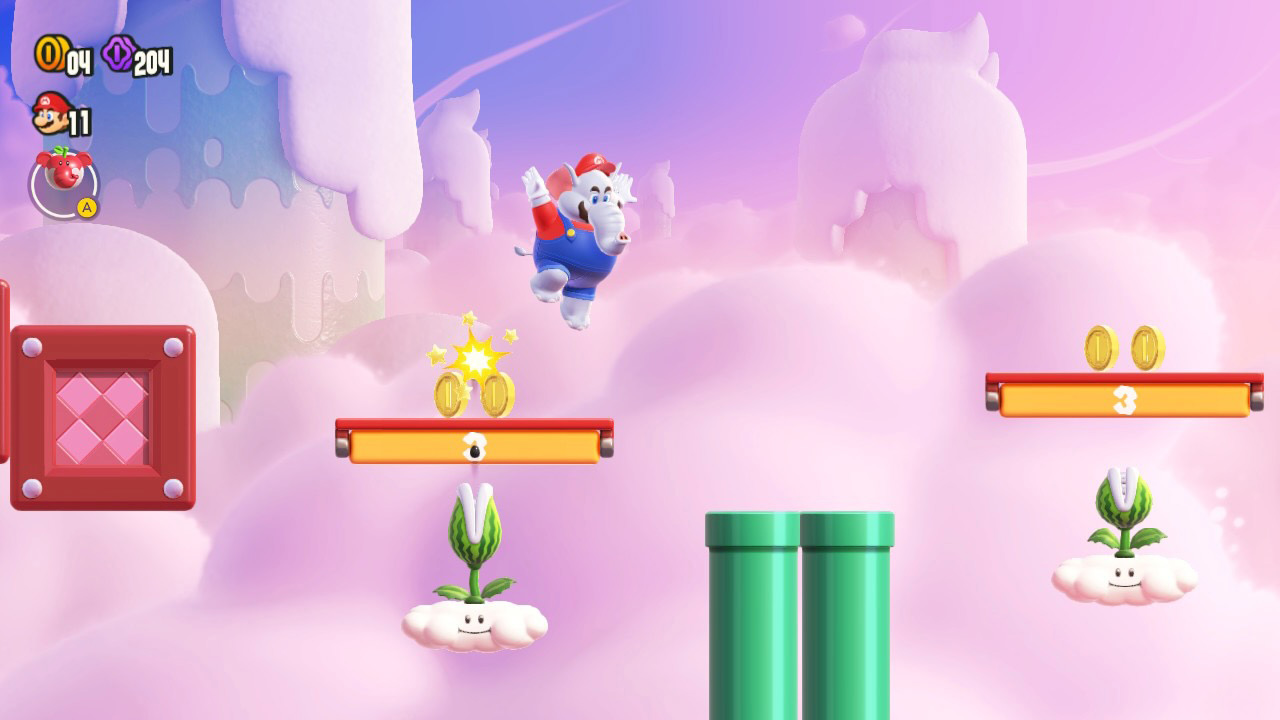
The Super Mario Bros. series has a long-running history, and for many, their perception of the plucky plumber’s true roots changes based on the first title they played in the franchise.
For example, those who grew up during the Nintendo 64 era might closely associate Super Mario Bros. with Super Mario 64, a title that truly defined 3D gaming for the entire industry. If you fall into this category, there’s a possibility you weren’t even aware the series also invented the 2D platformer genre in the mid-80s, before perfecting it with Super Mario Bros. 3 for the NES and Super Mario World for the SNES — at least not until the New Super Mario Bros. entries appeared in the mid-2000s, bringing back the classic style.
While Nintendo returned to Super Mario Bros.’ true two-dimensional roots in the years since with the New Super Mario Bros. series for the DS, Wii, 3DS and Wii U, something always felt off about these games (Yes, I know Yoshi’s Island: Super Mario World 2 exists, but I’ve always felt it doesn’t really belong to the main Super Mario Bros. series). They offer serviceable 2D platforming action but don’t push the envelope like Super Mario Bros. 3‘s memorable level design or Super Mario World‘s ground-breaking coat of 16-bit visual polish and ample secrets. In fact, regarding the New Super Mario Bros. games, I can’t remember a single stage or key notable feature beyond the addition of overly frantic four-player multiplayer (on the other hand, Super Mario World‘s ‘Donut Plains 1’ is permanently etched into my mind).
All this is to say that Nintendo has played it safe with its 2D Mario titles for well over a decade, but thankfully, that changes with Super Mario Bros. Wonder, a game that feels like a true sequel to Super Mario Bros. 3 and Super Mario World.
First off, Super Mario Bros. Wonder offers the most substantial visual leap the Super Mario Bros. franchise has received since the jump to HD with Super Mario Bros. U. Animation is fluid, with characters’ movements looking like they’re pulled right from a Pixar movie. Playable characters, including Mario, Luigi, Peach, Toad, Yoshi, Daisy (my personal favourite) and more, have all received subtle design updates that make them look far more modern than they ever have before (they all control the same, though), while still retaining that distinct Nintendo feel that’s defined the series’ look since the mid-80s.
There’s a level of vibrance to the ‘Flower Kingdom’s’ stages you’d typically only find in 3D Mario titles, complete with wisecracking flowers that actually speak. I found this suspiciously curious fauna a little strange at first since real voice acting had never been featured in a Super Mario Bros. game before, but this feeling quickly disappeared after the first few stages. It makes sense in the context of a modern Mario title and adds humour to the world.
Gameplay is where Super Mario Bros. Wonder truly shines, however.
The basis of 2D Mario titles remains: running, jumping and taking down enemies by landing on their heads with precise, great-feeling controls, but Nintendo has added a much-needed dose of variety to the formula in the form of ‘Badges.’ The Badge you equip before entering a stage fundamentally changes how you’re able to approach it and can unlock new sections of levels, giving you access to hidden items and other secrets.
For example, I find myself gravitating to the ‘Parachute Cap,’ a Badge that lets you glide through the air with a giant version of your character’s hat, or the ‘Crouching High Jump,’ an ability that lets you jump extremely high. ‘Dolphin Kick’ is also a must-have for most water stages, and ‘Coin Magnet’ is very useful if you’re running low on lives and need to round up cash quickly (there are a few Badge surprises, too). Unlike other recent 2D Mario titles, I’ve played levels multiple times with different abilities equipped to access previously unreachable parts of stages. It’s not entirely like backtracking with a new ability in a Metroid or Castlevania game, but it does give me a reason to keep exploring levels I’ve already completed.
In that same vein, I’ve also enjoyed playing around with the ‘Elephant,’ ‘Drill’ and ‘Bubble’ abilities, though I don’t find them quite as compelling as Badges. Still, taking the form of an Elephant is undeniably fun, and the additional utility of shooting water to bash through bricks is a literal blast that comes in handy often. I’ve also grown fond of how the Drill ability allows me to hide under enemies and pop out at the last minute to take them down.
Speaking of levels, Super Mario Bros. Wonder features the most memorable I’ve encountered in years. Ranging from stages full of diving Robbirds relentlessly flying at you, to painfully difficult ‘Badge Challenges’ requiring you to wall climb and jump your way to victory, or levels with constantly moving poles and platforms, Super Mario Bros. Wonder‘s stages are both inventive and often very difficult.
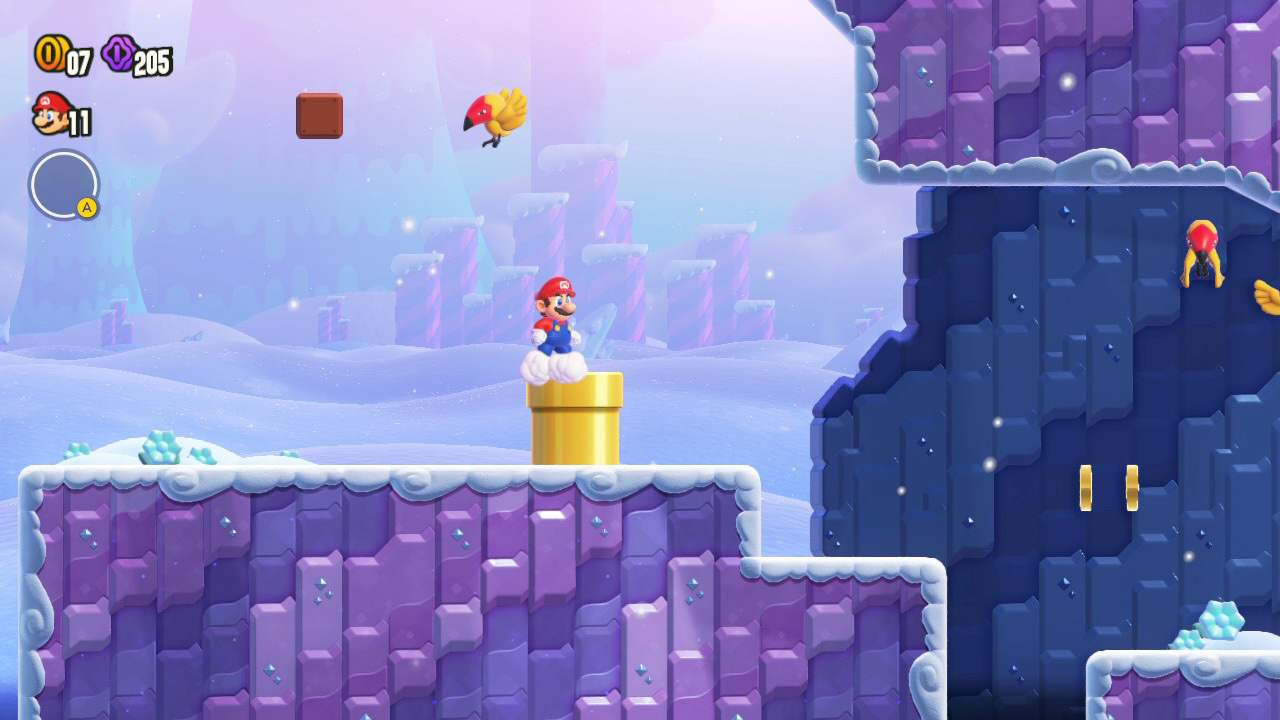
The subtle changes to Mario’s design add a much-needed fresh coat of paint to the Italian plumber’s look.
Regarding challenge, a great addition to the overworld map is a difficulty level indicator. This is especially useful if you’re playing co-operatively with someone less experienced with 2D platformers because it lets you know exactly what you’re getting into difficulty-wise before starting a stage (a few early stages are very hard, but thankfully, can be skipped). It’s worth noting most levels feature a ‘Wonder Flower’ that pulls you into a drug trip-like otherworldly take on the Flower Kingdom. Without giving too much away, Wonder Flower sequences offer some of the most inventive and surprising gameplay a 2D Mario title has featured in years — they definitely live up to my expectations.
“For the first time in decades, Nintendo has finally decided to build on the 2D Super Mario Bros. series in a truly meaningful way.”
To unlock different Worlds and areas of the map, you need to collect a specific number of ‘Wonder Seeds.’ Some Wonder Seeds are easy to find, while others are buried deep within the intricacies of levels and are very difficult to uncover. ‘Search Party’ stages, where you’re tasked with hunting down several Seeds, are an excellent example of this. In some situations, I’ve spent nearly 30-45 minutes hunting down the required items in some of these stages. There are also race levels that pit you against opponents like a Wiggler, adding even more level variety to the mix.
To my surprise, Super Mario Bros. Wonder is one of Nintendo’s best online efforts so far. As expected, there’s local co-op for up to four players (thankfully, the ability to jump on your co-op partners’ heads accidentally — or on purpose — has been entirely removed from the game), but surprisingly, Nintendo’s latest 2D Mario title goes all-in with online multiplayer.
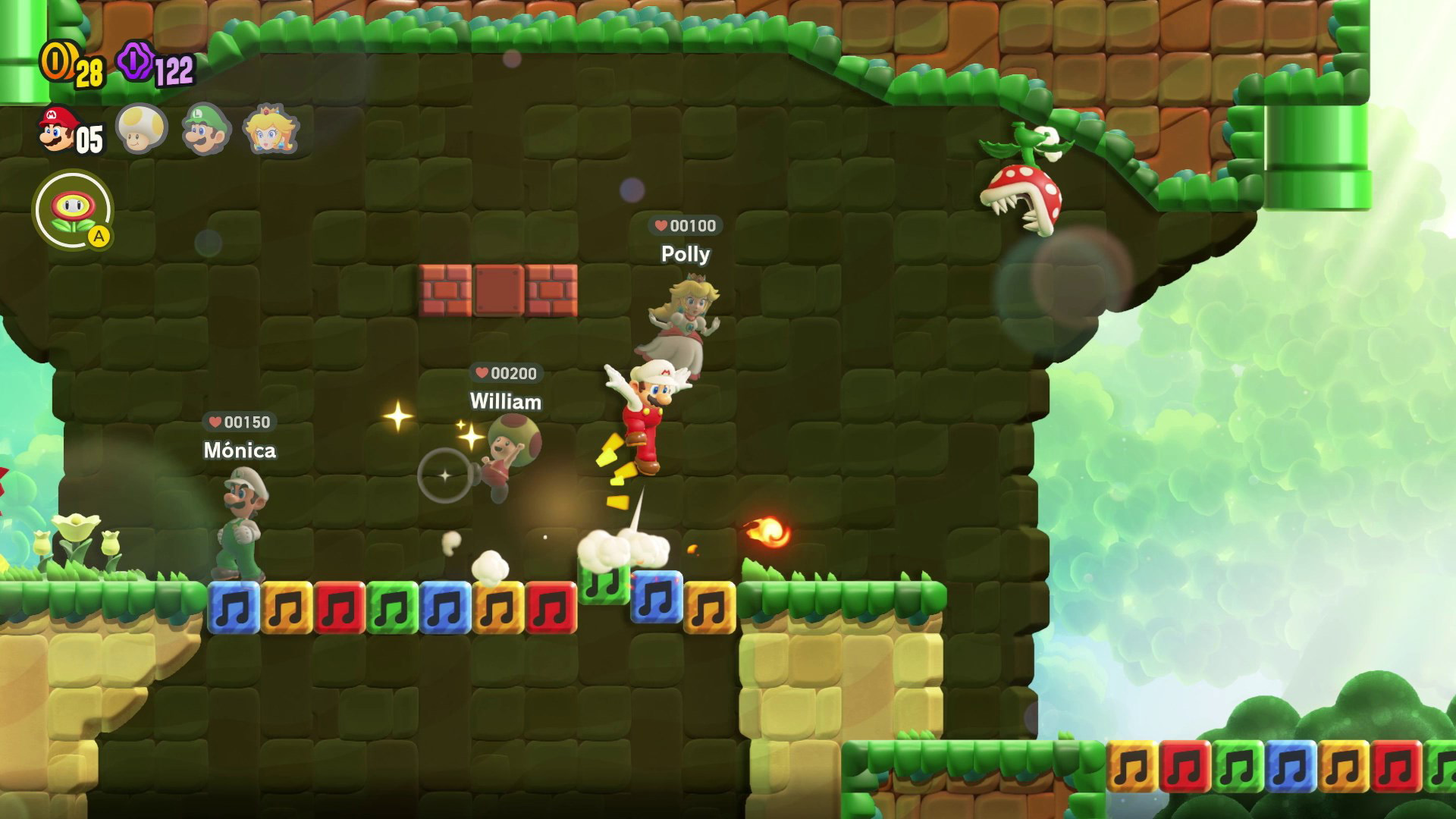
Ghosts will quickly become your best friends if you play with online features turned on. Image credit: Nintendo
You can create parties and play cooperatively online with friends, going so far as to split your group across multiple levels. If you’re more of a single-player person (like me), there’s Dark Souls-like asynchronous multiplayer featuring shadows of other players running around stages (this can easily be turned on and off in the overworld). It’s sort of like competing against ghost vehicles in a racing game, only these friendly silhouettes are here to lend a hand. The shadows are helpful if you’re searching for hidden items or need tips for navigating a level. Further, if you happen to die and manage to float your way back to one of these shadows, you’ll respawn. If you’re stuck on a particularly difficult level, you’ll likely come to rely on help from these ghost online players rather quickly, though they aren’t as common as they might initially seem.
You can also add ‘Standee’ cardboard cutouts to stages to offer tips or troll other players. Standees can be purchased in-game with purple coins you find in stages. Standees also work as checkpoints for yourself and other players if you’re running into difficult sections of stages, adding a welcome quality-of-life addition to the typical Super Mario Bros. formula.
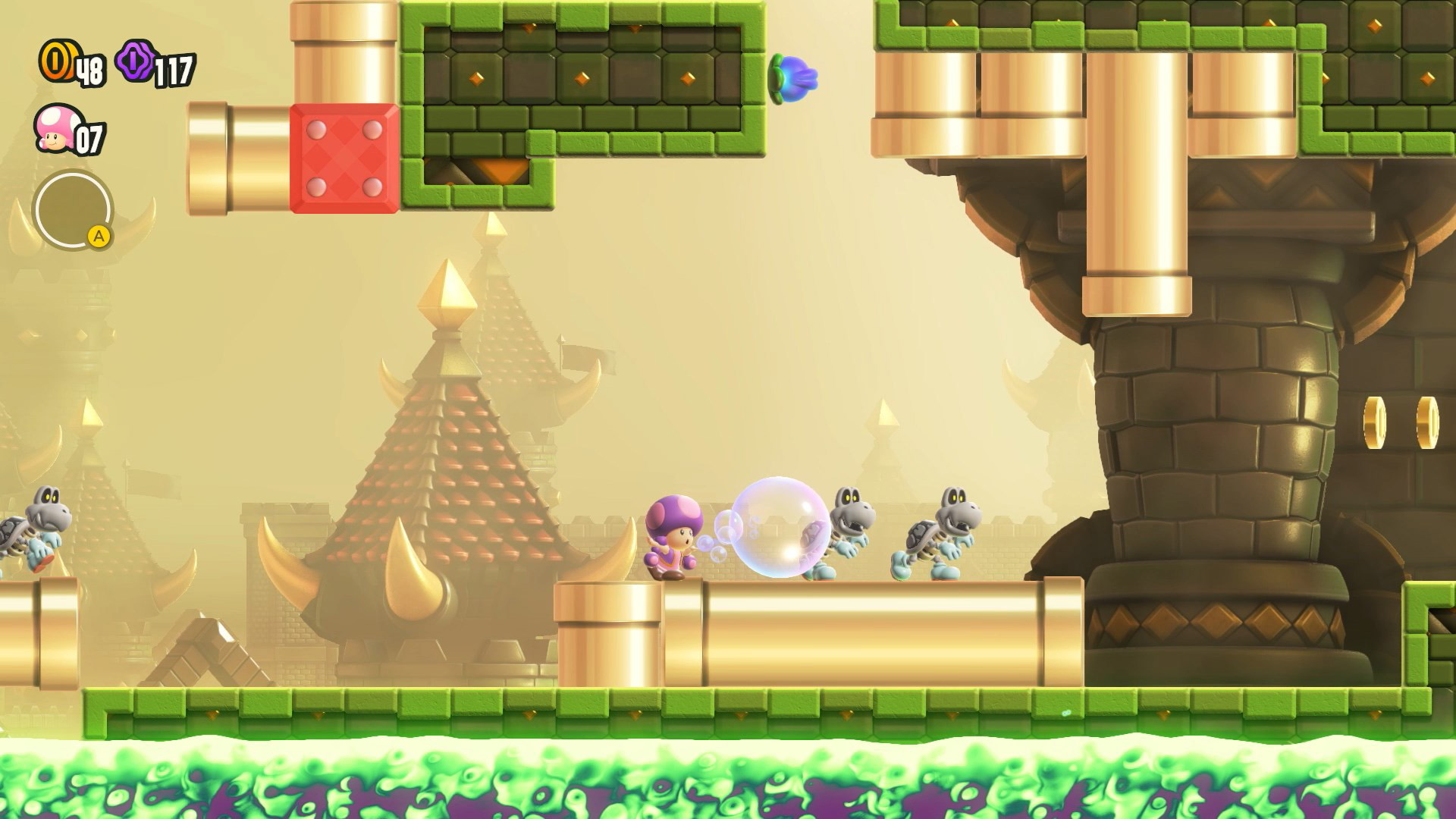
The art direction in Super Mario Bros. Wonder is the best the series has offered in years. Image credit: Nintendo
While Super Mario Bros. Wonder is a great game to introduce players new to the world of 2D Super Mario Bros., it’s also a spectacular reinvention of the series’ expected formula following years of Nintendo being reluctant to take risks with its two-dimensional plumber.
I’m well aware saying Super Mario Bros. Wonder feels like a true sequel to Super Mario Bros. 3 is a grandiose statement to make given the NES classic is regarded by most as the pinnacle of the series — but it’s true. For the first time in decades, Nintendo has finally decided to build on the 2D Super Mario Bros. series in a truly meaningful way.
Super Mario Bros. Wonder releases on October 20th for $79.99 on the Nintendo Switch.
MobileSyrup utilizes affiliate partnerships. These partnerships do not influence our editorial content, though we may earn a commission on purchases made via these links that help fund the journalism provided free on our website.
MobileSyrup may earn a commission from purchases made via our links, which helps fund the journalism we provide free on our website. These links do not influence our editorial content. Support us here.

